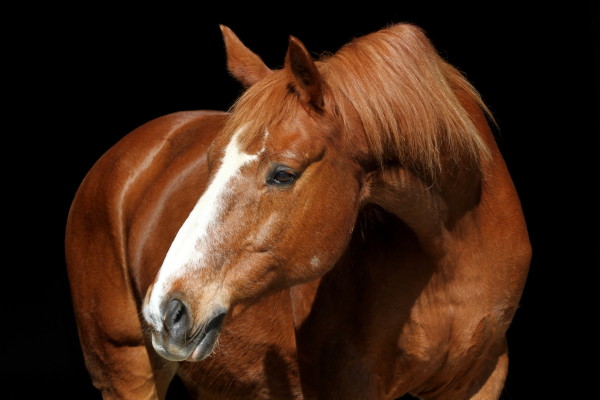Surgical solutions for PPID in horses?
- December 15, 2023
- ⎯ Christine Barakat with Mick McCluskey, BVSc
A Canadian researcher is working to develop a surgical technique that could, one day, provide a long-lasting fix for pituitary pars intermedia dysfunction (PPID) in horses.
PPID, also historically known as Cushing’s Disease, occurs when a part of the pituitary gland known as the pars intermedia becomes enlarged and secretes excessive levels of adrenocorticotrophic hormone. The body reacts to this excess by exhibiting a variety of clinical signs, including a long persistent haircoat, increased sweating, compromised immune function and muscle wasting. Although considered a disease of older horses, PPID can develop in horses as young as 15.

The medication, Pergolide, is effective at controlling PPID, but must be given daily for the duration of the horse’s life. “The cost of this daily pill adds up and the time, effort and stress of medicating this horse, when objectively viewed, is also not insubstantial,” says James Carmalt, VetMB, PhD of the University of Saskatchewan, Canada.
Looking for an alternative, Carmalt has been experimenting with surgical techniques that remove or disable the diseased tissue in the pituitary gland. Although this is a novel concept in equine medicine, similar surgeries have long been used to control Cushing’s disease in people and dogs.
So far, says Carmalt, the technique showing the greatest promise for PPID horses involves threading a catheter through the blood vessels of the face to reach the pituitary gland. “The pituitary gland sits, like an island, in this blood-filled sinus which can be thought of as a lake,” says Carmalt. “If we pass a needle up an emissary vein into the lake, we can approach the island and direct a needle into it.”
Click here to learn about a new way of diagnosing PPID in horses.
With access to the gland, Carmalt continues, a surgeon can inject a substance to shrink it, reducing the amount of tissue available to secrete hormones. This, he says, would be safer than the excision given the difficult in accessing the pituitary gland, as well as its delicate nature. “Given that we do not have the tools to guide the needle into only the abnormal tissue of the pars intermedia, it seems safer to deliver something into the entire gland, which in PPID will primarily be the enlarged pars intermedia in any case, rather than try to cut a portion out,” he says. “It is important to remember that the other portions of the pituitary gland contains cells that are producing hormones critical to the long-term well-being of the horse”
Carmalt says much work still needs to be done, he’s confident a reliable technique can be developed. “I think that within 10 years, we’ll have something that is working,” he says.
Horse owners might be reluctant to opt for brain surgery as a treatment for Cushing’s (PPID), acknowledges Carmalt, but a thorough explanation of the procedure could help them see the benefits. “It is scary, but to be honest, if it is explained—like passing a catheter into a vein (which horse owners see all the time), only this vein leads to the brain—then it seems less invasive. There is a tiny incision in the side of the face and the rest of the stuff is done using advanced guidance systems.”
Carmalt adds that the costs and labor savings may also be significant. “We consider that we can make this a one-time intervention which will be the same cost as a year of daily medication,” he says. “There is envisaged to be no further cost, no stress associated with daily medication and no additional effort required for horse owners to enjoy their senior equine companions. Ultimately of course the remaining abnormal cells left within the pars intermedia will result in a recrudescence of clinical signs, however, by this time the horse may have succumbed to old age, rather than the complications of having PPID such as laminitis.”
Reference: “Development of two surgical approaches to the pituitary gland in the horse,” Veterinary Quarterly, December 2017
Don’t miss out! With the free weekly EQUUS newsletter, you’ll get the latest horse health information delivered right to your in basket! If you’re not already receiving the EQUUS newsletter, click here to sign up. It’s *free*!








